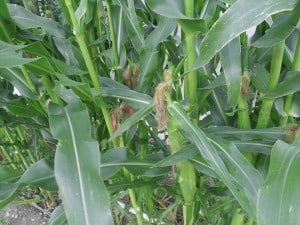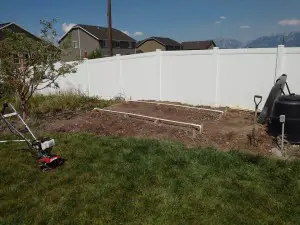
There’s a lot of debate when it comes to soil preparation for vegetable plants. Some argue how important it is to add composts, manures and other amendments to the soil with the intent of “feeding the soil” so that it will, in turn, be able to feed the plant.
Many, with that in mind, end up loading tons of manure on and tilling it in, in the belief that they are providing their plants up front with all the nutrients they are going to need during the growing season. Some add expensive items like vermiculite, peat moss, and other organic animal byproducts to their beds under the same guise of improving their existing soil. All without knowing the amounts of nutrients that are actually being provided for the plants or the massive quantities of excess salts they are adding that will in fact hurt their plants instead of helping them.
There are also those who believe rich deep soil will allow their veggies to grow deep roots and conclude from that that the vegetable plant will be healthier. These would recommend tilling deeply and perhaps even removing a level of soil and double-digging or tilling an extra layer deep.
I have done all this (and more, truth be told) and guess what? IT DOESN’T WORK!
Why?
- Plants REQUIRE elements/chemicals to be in a soluble state before they are able to absorb and utilize them.
- The necessary elements provided in only trace amounts bound in things like manure and compost take time to break down to the stage necessary for them to be soluble for your plants.
- By the time this happens it’s too late for a seasonal vegetable plant to take advantage of and total possible yield will have been significantly reduced.
If your objective for a vegetable garden is to grow food in a short amount of time then you need to provide the plant with the things it needs in order to produce food fast! You are not interested in deep roots. You are not interested in lush growth or pretty plants or drought tolerance, etc. These plants are not meant to be kept as perennials for the long term – they just need to get in, get the job done (which is give you food) and get out.
The best part? What this means in actual practice is LESS WORK for you and INCREASED YIELD from your plants. For a successful vegetable garden, your plants really only need about 8″ inches of soil which can be accomplished by cultivating to a depth of only 2″!
How?
- Remove all vegetative growth from the whole garden area – get rid of the weeds.
-
Run a cultivator over the entire area giving you at least 2″ of cultivated soil to work with (8 inches only where the beds will go).
- With a rake, pull the soil from path areas into 18″ wide planting beds (you’ll want your paths at least 3′ wide).
- Now take the rake and pull an inch of soil from the center of the beds down both sides to create ridges down the lengths of the beds (the end result being a ridged bed about 12″ wide on the interior and 18″ wide on the exterior).

And there you have it – each 18″ wide bed can contain two rows of vegetable plants(planted down the length at the base of the ridges you’ve created). Only the planting beds have the cultivated soil (reducing weeds). Only the planting beds need to now have nutrients added (reducing cost and amounts of fertilizers). The planting beds are now raised up several inches above the surrounding ground preventing washout in severe weather. Only the planting areas receive irrigation.
Here’s Jim Kennard, President of the Food for Everyone Foundation, demonstrating the process in this video:
This method works. It has worked for us, it has saved us money, it has saved us time and my yield has increased tremendously. We know it will work for you if you gave it a shot.
Happy Gardening!
Click here to read more on Mittleider Method’s official website

